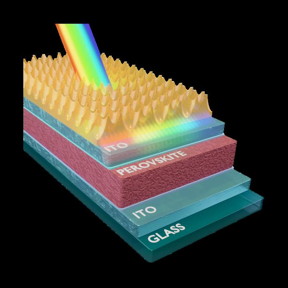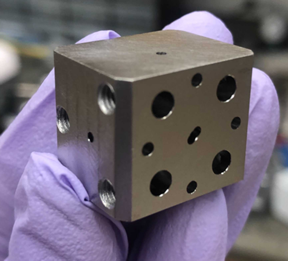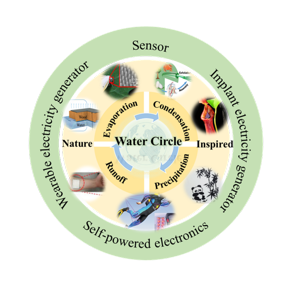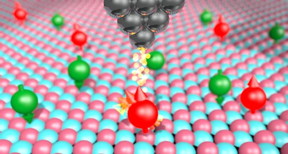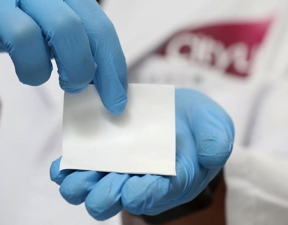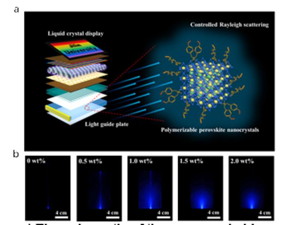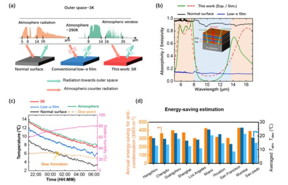Home > Press > High-tech ‘paint’ could spare patients repeated surgeries
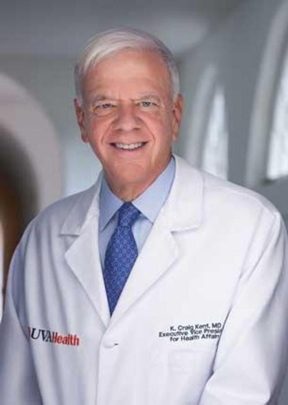 |
| Researcher K. Craig Kent, MD, is a vascular surgeon who has seen first-hand the desperate need for a way to prevent frequent revascularizations. Kent is also UVA Health’s chief executive officer and the University of VIrginia’s executive vice president for health affairs.
CREDIT |
Abstract:
UVA Health researchers have received $2.8 million to advance their development of a high-tech way to save heart and dialysis patients from the need for multiple surgeries.
High-tech ‘paint’ could spare patients repeated surgeries
Charlottesville, VA | Posted on March 8th, 2024
Researchers Lian-Wang Guo, PhD, and K. Craig Kent, MD, are pioneering a quick and gentle technique to “paint” tiny nanoparticles on transplanted veins to prevent the veins from becoming clogged in the future. This type of blockage often causes cardiovascular and dialysis patients to require repeated surgeries; approximately half of all heart bypass vein grafts fail and require another graft.
Dialysis patients, meanwhile, often require multiple surgeries to continue their lifesaving treatment. For some, this can lead to an endless series of surgeries on both arms and then the leg or collarbone area.
If UVA’s new approach is successful, it would be the first solution for these patients and a game-changing application of nanomedicine – medicine performed at an astonishingly small scale.
“Our approach is like deploying tiny guards to protect blood vessels from going bad, so that there is no need to open the body over and over again to repair them,” said Guo, of the University of Virginia School of Medicine’s Department of Surgery and the Robert M. Berne Cardiovascular Research Center. “It would save so much pain and money by sparing repeated surgeries.”
‘Painting’ for Better Health
Vascular surgeons commonly perform “revascularizations” to treat cardiovascular disease. This restores blood flow to areas that have lost it, or that are receiving an inadequate blood supply. For example, this might come in the form of a vein graft, which relocates a vein from one part of the body to another, such as from the leg to the heart for patients with heart failure.
People who need dialysis because of failing kidney function, meanwhile, undergo a surgical procedure to graft together an artery and a vein, typically in the arm, to provide dialysis access. This allows their blood to be removed from the body, cleansed of toxins and then returned. These dialysis connection points are called “arteriovenous fistulas,” or AVFs, and management of them in patients with end-stage renal disease is estimated to cost $5 billion per year in the United States alone.
Revascularizations are prone to fail with time. That’s because the procedures themselves encourage the same issue they’re trying to address: problems with blood flow. The surgery itself triggers the buildup of cells within the vessels that ultimately choke off blood supply once more.
Unfortunately, doctors have no good alternatives. There are no “standards of care” for AVFs because, despite much effort, nothing has been effective at keeping them open. Some AVFs never achieve sufficient blood flow to work properly at all. So patients’ only option is to have a new one installed when their old one fails – and they fail frequently.
“Coronary artery bypass grafting, called CABG, involves cutting open the patient’s chest for surgery on the heart. It is already so disruptive to the patient’s normal life, and imagine the surgery has to be repeated when the graft fails,” said Kent, a vascular surgeon who is also UVA Health’s chief executive officer and UVA’s executive vice president for health affairs. “Surgeons need an easy-to-use technology that enables them to just paint some protective nanoparticles onto grafts to keep the grafts functional so that repetitive surgeries become unnecessary.”
The Potential of EpiNanopaint
Kent, Guo and their team of UVA collaborators want to take a new approach. Their technique, called epiNanopaint, would let surgeons brush adhesive nanoparticles on the vessels during the initial surgery. These nanoparticles would contain a drug that would prevent the harmful growth of invasive cells.
Because the nanoparticles are sticky, they stay where they are placed, allowing long-term delivery of the drug exactly where needed. (That sort of precision is one of the great strengths of nanomedicine, a priority research area for the UVA School of Medicine and UVA’s under-construction Paul and Diane Manning Institute of Biotechnology.)
Guo and Kent will use the $2.8 million from the National Institutes of Health to study whether a particular enzyme, DOT1L, can be targeted with drugs to prevent the vessels from narrowing. They’ll also work with Shaoqin Gong, PhD, at the University of Wisconsin-Madison, to determine how best to use the painting approach to deliver the drug. “To make sure this technology will be safe and effective for patients, we have a lot more work to do,” Guo said.
If the research is successful, the new approach could be transformative for vast numbers of patients around the world. More than 400,000 open vascular reconstructions are performed in the United States alone each year, while the number of Americans receiving dialysis almost doubled between 2000 and 2018, to more than a half-million.
“Our goal is to develop the first therapy that can reduce graft failure rates in patients who receive vascular reconstruction surgeries,” Kent said. “This would be a tremendous benefit for patients everywhere.”
More information about the research is available here. The research team consists of Takuro Shirasu, Nisakorn Yodsanit, Jing Li, Yitao Huang, Xiujie Xie, Runze Tang, Qingwei Wang, Mengxue Zhang, Go Urabe, Amy Webb, Yuyuan Wang, Xiuxiu Wang, Ruosen Xie, Bowen Wang, Kent, Shaoqin Gong and Guo.
To keep up with the latest medical research news from UVA, subscribe to the Making of Medicine blog at http://makingofmedicine.virginia.edu .
####
For more information, please click here
Contacts:
Josh Barney
University of Virginia Health System
Cell: 434-906-8864
Copyright © University of Virginia Health System
If you have a comment, please Contact us.
Issuers of news releases, not 7th Wave, Inc. or Nanotechnology Now, are solely responsible for the accuracy of the content.
| Related News Press |
News and information
![]()
Researchers develop artificial building blocks of life March 8th, 2024
Possible Futures
![]()
Nanoscale CL thermometry with lanthanide-doped heavy-metal oxide in TEM March 8th, 2024
Nanomedicine
![]()
Researchers develop artificial building blocks of life March 8th, 2024
![]()
Superbug killer: New synthetic molecule highly effective against drug-resistant bacteria February 16th, 2024
Discoveries
![]()
What heat can tell us about battery chemistry: using the Peltier effect to study lithium-ion cells March 8th, 2024
![]()
Researchers’ approach may protect quantum computers from attacks March 8th, 2024
![]()
Nanoscale CL thermometry with lanthanide-doped heavy-metal oxide in TEM March 8th, 2024
![]()
Optically trapped quantum droplets of light can bind together to form macroscopic complexes March 8th, 2024
Announcements
![]()
What heat can tell us about battery chemistry: using the Peltier effect to study lithium-ion cells March 8th, 2024
![]()
Nanoscale CL thermometry with lanthanide-doped heavy-metal oxide in TEM March 8th, 2024
Nanobiotechnology
![]()
Researchers develop artificial building blocks of life March 8th, 2024
![]()
Superbug killer: New synthetic molecule highly effective against drug-resistant bacteria February 16th, 2024
- SEO Powered Content & PR Distribution. Get Amplified Today.
- PlatoData.Network Vertical Generative Ai. Empower Yourself. Access Here.
- PlatoAiStream. Web3 Intelligence. Knowledge Amplified. Access Here.
- PlatoESG. Carbon, CleanTech, Energy, Environment, Solar, Waste Management. Access Here.
- PlatoHealth. Biotech and Clinical Trials Intelligence. Access Here.
- Source: http://www.nanotech-now.com/news.cgi?story_id=57464
- :has
- :is
- :not
- :where
- $UP
- 000
- 10
- 16th
- 2000
- 2018
- 28
- 4
- 400
- 6
- 7
- 7th
- 8
- 8th
- a
- About
- access
- accuracy
- Achieve
- address
- advance
- advanced
- Affairs
- again
- against
- All
- Allowing
- allows
- almost
- alone
- already
- also
- alternatives
- Americans
- amy
- an
- and
- Another
- Application
- approach
- approximately
- ARE
- AREA
- areas
- ARM
- arms
- around
- artificial
- AS
- At
- available
- Bad
- battery
- BE
- because
- become
- becoming
- been
- benefit
- BEST
- Better
- between
- Billion
- bind
- biotechnology
- Blocks
- Blog
- blood
- blood vessels
- body
- both
- Brazilian
- Building
- by
- bypass
- called
- CAN
- cardiovascular
- Cardiovascular Disease
- causes
- Cells
- Center
- CGI
- chemistry
- chief
- Chief Executive
- chief executive officer
- click
- collaborators
- COM
- come
- comment
- commonly
- computers
- connection
- consists
- contain
- content
- continue
- Cost
- could
- Craig
- credit
- cutting
- del
- deliver
- delivery
- Department
- deploying
- Derivatives
- Despite
- Determine
- develop
- developed
- Development
- Dialysis
- Diane
- Discovers
- Disease
- disruptive
- do
- Doctors
- doubled
- drug
- Drugs
- during
- each
- easy-to-use
- effect
- Effective
- effort
- enables
- encourage
- end
- Endless
- estimated
- Ether (ETH)
- everywhere
- exactly
- example
- executive
- Executive Officer
- FAIL
- failing
- fails
- Failure
- February
- First
- flow
- For
- form
- formulation
- frameworks
- frequent
- frequently
- from
- function
- functional
- future
- gentle
- gif
- Go
- goal
- going
- good
- great
- Growth
- Half
- harmful
- Have
- Health
- Heart
- Heart Failure
- here
- highly
- How
- http
- HTTPS
- huang
- if
- imagine
- in
- Inc.
- inflammation
- information
- initial
- installed
- Institute
- invasive
- involves
- involving
- issue
- IT
- itself
- jpg
- just
- Keep
- keeping
- kidney
- killer
- latest
- lead
- Leads
- let
- li
- Life
- light
- like
- links
- long-term
- lost
- Lot
- make
- Making
- management
- March
- materials
- May..
- Meanwhile
- mechanism
- medical
- medical research
- medicine
- might
- million
- molecule
- money
- more
- much
- multiple
- Nanomedicine
- nanotechnology
- National
- National Institutes of Health
- Need
- needed
- net
- never
- New
- news
- no
- normal
- nothing
- novel
- now
- number
- numbers
- of
- off
- Officer
- often
- Old
- on
- once
- ONE
- only
- onto
- open
- Option
- or
- over
- overall
- Pain
- paint
- painting
- pandemic
- part
- particular
- patients
- Paul
- per
- perform
- performed
- phd
- PHP
- Pioneering
- placed
- plato
- Plato Data Intelligence
- PlatoData
- please
- points
- Post
- posted
- potential
- Precision
- president
- press
- Press Release
- prevent
- priority
- problems
- procedure
- procedures
- properly
- protect
- protection
- Protective
- proved
- provide
- Quantum
- quantum computers
- Quick
- Rates
- receive
- received
- receives
- receiving
- reduce
- release
- Releases
- Removed
- renal
- repair
- repeated
- repetitive
- require
- research
- Research News
- researcher
- researchers
- responsible
- restores
- return
- ROBERT
- s
- safe
- Said
- same
- Save
- Scale
- School
- Search
- seen
- Series
- Share
- small
- So
- Soft
- solely
- solution
- some
- sort
- start
- States
- stay
- sticky
- strengths
- Study
- submit
- subscribe
- successful
- such
- sufficient
- supply
- sure
- Surface
- surgeon
- Surgery
- surgical
- synthetic
- Take
- tang
- targeted
- team
- technique
- Technology
- tell
- tested
- tests
- than
- that
- The
- The Future
- the world
- their
- Them
- themselves
- then
- therapy
- There.
- These
- they
- this
- time
- tiny
- to
- together
- transformative
- trapped
- treat
- treatment
- tremendous
- trying
- type
- typically
- Ultimately
- undergo
- United
- United States
- Universal
- university
- unnecessary
- us
- use
- using
- Vast
- vessels
- vice
- Vice President
- virginia
- wang
- want
- Water
- Wave
- Way..
- we
- when
- whether
- which
- while
- WHO
- will
- with
- within
- Work
- world
- would
- Yahoo
- year
- you
- zephyrnet
- zhang










